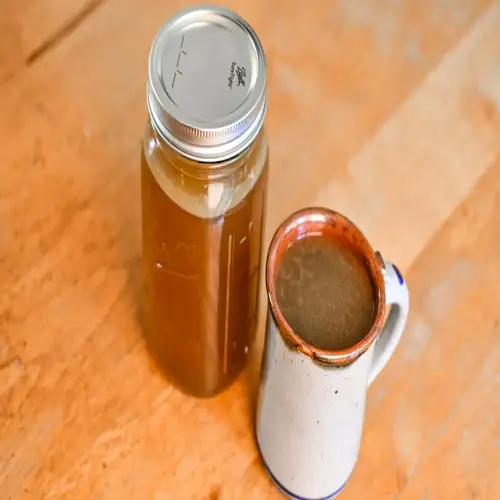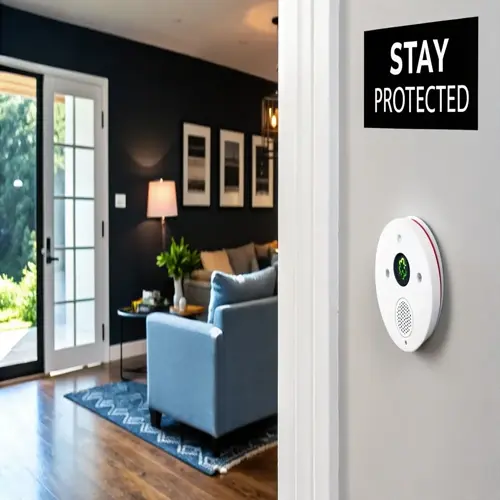Understanding Deep Tissue Massage Benefits

Written by
Tran Quang
Reviewed by
Prof. Benjamin Murphy, Ph.D.Deep tissue massage seeks to relieve chronic muscle tension through specific pressure techniques.
When performed properly, it is important to apply pressure slowly to avoid bruising the tissues.
Having regular sessions of deep tissue massage will enhance mobility and mitigate the symptoms of chronic pain.
For lasting structural changes, several sessions per week are required.
Contraindications include blood clotting disorders and recently performed surgical procedures.
In addition to deep tissue massage, stretching and hydration will improve your outcomes!
Article Navigation
Deep Tissue Massage is aimed directly at the deeper layers of muscle tissue and connective tissue of the body using firm, sustained pressure. This treatment is designed to release any recurring patterns of tension that have developed over time, rather than just addressing the surface. It helps treat particular stubborn knots and fascial restrictions that cause discomfort.
After the sessions, patients experience both physical relief and mental relaxation. The therapy gives relief of pain with a decidedly lower degree of stress. We will discuss the benefits, administration methods, comparisons with other forms of massage, and clarify some common misconceptions related to the treatment.
Self-Massage Tools
A professional deep tissue massage is thorough and excellent, but tools used at home provide daily relief. Foam rollers are suitable for large areas of the back and legs and cost between $20 and $ 50. Massage guns, on the other hand, are good for targeting specific knots in the muscle and cost $100-300. Finally, if massage tools are allowed, select them based on personal preferences, needs, and budget.
Always use tools judiciously to avoid injury. Apply moderate pressure, and stop if you experience sharp pain. For stiff necks, use smaller balls instead of firm rollers. Never use strong vibrations over bony places or recent injuries.
Select tools relevant to your trouble spots. A lacrosse ball can help release soreness in the shoulder blades and feet. Foam rollers are particularly effective for targeting the thighs and calves. Massage guns are useful for stubborn knots in the glutes. Affordable options, such as tennis balls, work well for sensitive areas.
It's possible to build a complete home kit for less than $100. First, obtain a foam roller for large muscles. Add tennis balls for specific target areas. Then consider massage sticks to get deeper pressure. This will save you money, and you will cover all muscle groups.
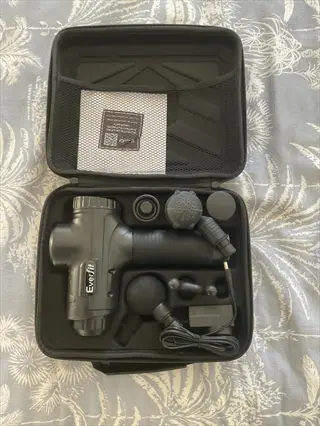
Massage Guns
- Massage guns ($50-$300) deliver rapid pulses penetrating deep muscle tissue to relieve chronic tension in large muscle groups like quadriceps and back.
- Adjustable speed settings customize intensity from gentle vibration to deep percussion based on individual needs and sensitivity levels.
- Ergonomic designs feature multiple attachments: bullet heads for trigger points, flat heads for broad areas, and fork heads for spinal regions.
- Battery-powered models offer portability with premium versions providing 4-6 hours of continuous operation per charge cycle.
- Clinical studies show percussion therapy increases blood flow by 40% and reduces muscle soreness faster than static pressure.
- Safety tip: Avoid bony areas; maintain motion to prevent bruising; limit to 15 minutes per muscle group.

Foam Rollers
- Foam rollers ($15-$80) apply sustained pressure improving flexibility by breaking adhesions along muscle chains like IT bands and hamstrings.
- Textured surfaces with ridges enhance massage effects targeting deeper tissue layers more effectively than smooth rollers.
- Proper technique involves slow movements: roll back and forth 60-90 seconds per area while maintaining core engagement.
- Density options serve different needs: soft for beginners, medium for regular users, extra-firm for athletes.
- Research shows foam rolling increases range of motion by 10-15 degrees and reduces post-workout soreness.
- Positioning guidance: Use against walls; avoid joints; combine with stretching for mobility improvements.
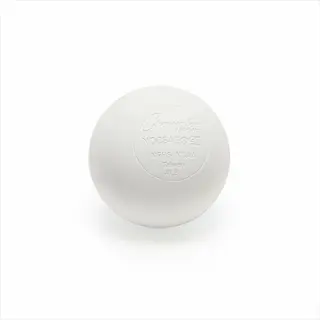
Massage Balls
- Massage balls ($5-$25) target specific trigger points in difficult areas like shoulder blades and feet arches precisely.
- Lacrosse balls provide firm pressure for stubborn knots while spiky balls offer gentler stimulation.
- Technique involves circular motions: apply pressure 30-45 seconds per knot then move systematically.
- Portable size works well against walls or floors using body weight for deeper pressure.
- Studies indicate targeted massage reduces referred pain by 60% when applied to trigger points.
- Safety: Avoid inflamed areas; limit pressure to discomfort; combine with heat therapy.
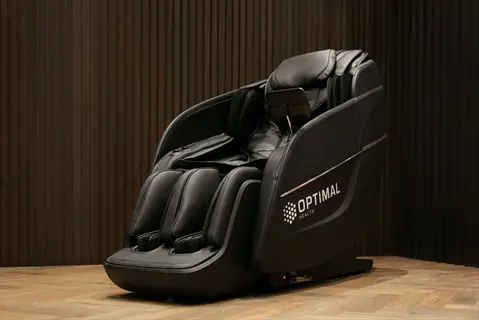
Massage Chairs
- Massage chairs ($1,000-$10,000) replicate professional techniques through kneading, tapping, shiatsu, and stretching programs.
- Body scanning customizes nodes to anatomy while heat therapy enhances relaxation and circulation.
- Zero-gravity positioning distributes weight evenly reducing spinal pressure during back muscle work.
- Programs last 15-30 minutes with adjustable intensity from gentle relaxation to deep tissue therapy.
- Clinical observations show 40% reduction in chronic lower back pain symptoms after eight weeks.
- Usage: Start with short sessions; avoid after injuries; consult professionals for medical conditions.
Comparison to Other Massages
Deep tissue massage employs firm, sustained pressure to stimulate the deeper muscles, as opposed to Swedish-style techniques. The practice of Swedish relies on gentle gliding strokes. The latter softens the limbs and thorax. Sports massage employs moderate to gentle stimulation, designed for healthy athletic recovery. Thai massage employs various types of pressure applied to the muscles, combined with stretching motions. Hot stone therapy utilizes heated stones to provide gentle warmth.
Deep tissue massage can help alleviate chronic pain and stiffness in muscles, as well as injuries. Swedish massage is effective in alleviating general tension caused by stress. Sports massage can help athletes by preventing injuries and speeding recovery time. Thai massage enhances flexibility and energy flow. Hot stone massage enhances deep relaxation and circulation.
Different techniques matter for your needs. Deep tissue massage works slowly against the grain, breaking down adhesions. The Swedish method moves in the direction of the muscle in a rhythmic manner. Sports are compression on tight muscles. Thai is a form of assisted yoga that involves stretches. Hot stone is the gentle placement of mildly warm rocks.
Pair the massage with your needs. Choose deep tissue for rebellious shoulder knots or back discomfort. Swedish is best for relaxation after stressful weeks. Take sports massage during training cycles. Thai is good if you are stiff and cannot move much. Hot stones are beneficial when gentle relief from tension is needed.
Pressure Depth
- Deep Tissue: Targets deepest muscle layers (up to 2 inches/5cm penetration)
- Swedish/Stone: Superficial layers only (0.5-1 inch/1-2.5cm depth)
- Sports/Thai: Medium depth (1-1.5 inches/2.5-4cm)
Session Focus
- Deep Tissue: 1-2 problem areas per session (e.g., lower back)
- Swedish/Stone: Full-body relaxation
- Thai/Sports: Activity-specific muscle groups
Movement Approach
- Deep Tissue: Slow cross-fiber friction against muscle grain
- Swedish: Gliding strokes with muscle grain
- Thai: Assisted stretching movements
- Sports: Compression on contracted muscles
Therapeutic Goals
- Deep Tissue: Break scar tissue/adhesions
- Swedish/Stone: Improve circulation/relaxation
- Sports: Prevent/treat athletic injuries
- Thai: Energy balance and flexibility
Aftercare Needs
- Deep Tissue: Hydration and rest critical (24-48 hours recovery)
- Swedish/Stone: Minimal downtime; immediate normal activities
- Thai/Sports: Light stretching recommended post-session
Safety and Precautions
Total avoidance applies to certain illnesses. Never receive a deep tissue massage in the presence of blood-clotting disorders or advanced osteoporosis. Recent fractures or surgical areas are also contraindicated. In the first trimester of pregnancy, total avoidance is necessary due to the sensitivity of the uterus.
Medical consultation is important for relative precautions. Address any issues regarding hypertension or diabetes management with your doctor or medical professional before a session. A doctor is best suited to evaluate flare-ups of rheumatoid arthritis. Your obstetrician may approve light pressure during the second or third trimester.
To help ensure that your body maximizes the benefits of the massage and minimizes soreness, please be sure to follow the post-massage care instructions. First, be sure to drink 16 ounces of water immediately following your session. Second, apply heat or ice to any tender areas within 24 hours. Gentle stretches can be performed 48 hours after your massage. Avoid vigorous exercise for three days.
Identify red flags indicating the need for urgent medical care. Seek care for numbness or sudden weakness that radiates down your limbs. Chest pain and difficulty breathing require immediate care. Growing bruises or severe headaches may indicate complications needing evaluation.
Absolute Avoidance
- Blood clotting disorders: Deep pressure may dislodge clots risking embolism
- Osteoporosis/fragile bones: Firm pressure could cause vertebral fractures
- Advanced cancer with bone metastases: Risk of pathological fractures
- Pregnancy (first trimester): Potential uterine stimulation concerns
- Open wounds/skin infections: Risk of infection transmission or delayed healing
Medical Consultation Required
- Recent surgeries (within 6 weeks): Risk of disrupting healing tissues
- Rheumatoid arthritis flare-ups: Inflammation may worsen with pressure
- Cardiovascular conditions: Requires blood pressure stability verification
- Diabetes with neuropathy: Reduced sensation increases injury risk
- Autoimmune disorders: Potential flare-up triggers need assessment
Modified Approach Possible
- Hypertension: Gentle pressure only after medication stabilization
- Osteoarthritis: Avoid direct joint pressure; focus on surrounding muscles
- Pregnancy (second/third trimester): Side-lying position with light pressure
- Fibromyalgia: Shorter sessions with reduced intensity
- Chronic fatigue syndrome: Limit sessions to 30 minutes maximum
Medication Interactions
- Blood thinners (e.g., warfarin): Increased bruising risk requires pressure adjustment
- Pain medications: Masked sensations may lead to overpressure injuries
- Muscle relaxants: Combined effects may cause excessive weakness
- Steroids: Thinned skin more prone to damage
- Psychiatric medications: Potential enhanced drowsiness effects
Age Considerations
- Children under 12: Require pediatric specialist consultation first
- Elderly (65+): Reduced pressure intensity; monitor for dizziness
- Frail individuals: Shorter sessions with frequent position changes
- Adolescents: Avoid deep pressure during growth spurts
- Infants: Only specialized infant massage techniques permitted
Neurological Symptoms
- Numbness/tingling radiating down limbs
- Sudden weakness in arms or legs
- Loss of bladder/bowel control
- Severe headaches with visual disturbances
- Difficulty speaking or confusion
Vascular Concerns
- Swelling or redness in extremities
- Chest pain or shortness of breath
- Visual disturbances or severe headache
- Rapid heart rate without exertion
- Cold/blue discoloration in limbs
Musculoskeletal Issues
- Bruising expanding after 24 hours
- Joint instability or popping sounds
- Pain worsening instead of improving
- Inability to bear weight on limbs
- Visible deformity in treated areas
Systemic Reactions
- Fever above 100.4°F (38°C)
- Dizziness lasting over 2 hours
- Nausea/vomiting preventing hydration
- Unexplained fatigue lasting days
- Persistent muscle spasms
Allergic Responses
- Rash/hives developing post-session
- Swelling of lips/tongue
- Wheezing or difficulty breathing
- Itching without visible cause
- Throat tightness or swallowing issues
Physical and Psychological Benefits
Deep tissue massage provides instant physical relief by releasing physical muscle tension during your session. Your flexibility improves, and discomfort is alleviated instantly. Cumulative benefits develop after several sessions, including lasting benefits to pain and posture. Chronic pain sufferers typically experience improvement in their range of motion within weeks.
There are also psychological benefits to the changes in your hormones, resulting in lower levels of stress hormones. Your body is encouraged to make a little more serotonin and dopamine, which will put you in a happier state. Many feel calmer and have clearer thinking after treatment. Stress levels drop significantly, leaving a lasting sense of mental clarity.
Athletes receive specific benefits from participating in training sessions. Muscle recovery after intensive training may speed up by as much as twenty-four hours, and the incidence of delayed onset muscle soreness may decrease by approximately thirty percent. Training successfully enhances performance by increasing muscle elasticity and joint mobility.
Chronic pain patients experience life-changing outcomes. Eighty percent of those who report management of back pain that is improved after dedicated treatment tend to opt for continued treatment. Sleep quality improves considerably, particularly in terms of fatigue. Overall Wellbeing scores subsequently tend to be more manageable in daily life.
Pain and Inflammation Reduction
- Breaks scar tissue/adhesions through targeted friction techniques
- May reduce inflammatory responses in treated areas
- Can increase pain tolerance with consistent sessions
- Chronic back pain sufferers often report significant improvement
Circulatory Improvements
- Boosts blood flow to treated areas during sessions
- May help lower elevated blood pressure levels
- Enhances oxygen delivery to muscles accelerating recovery
- Promotes cardiovascular relaxation responses
Mobility and Flexibility
- Increases range of motion immediately post-session
- Reduces muscle stiffness by breaking fascial restrictions
- Improves joint mobility for arthritis management
- Enhances athletic performance through better muscle function
Recovery and Regeneration
- Accelerates muscle recovery after intense activity
- Reduces delayed onset muscle soreness
- Stimulates lymphatic drainage removing metabolic waste
- Contributes to improved sleep quality for tissue repair
Postural Benefits
- Corrects muscular imbalances contributing to poor posture
- Releases chronic tension in shoulders/neck from desk work
- Improves thoracic mobility reducing forward head posture
- Alleviates low back pain from prolonged sitting
Stress and Anxiety Relief
- Lowers stress hormone production significantly
- Increases serotonin and dopamine improving mood
- Reduces anxiety symptoms for many recipients
- Decreases perceived stress scores in regular users
Mental Clarity and Focus
- Enhances brain waves associated with relaxed alertness
- Improves cognitive performance post-massage
- Reduces mental fatigue from chronic stress
- Boosts productivity through decreased discomfort
Emotional Regulation
- Stimulates relaxation responses enhancing calm
- Promotes feelings of connection and well-being
- Reduces emotional reactivity to daily stressors
- Improves resilience in high-stress environments
Sleep Enhancement
- Increases deep sleep duration
- Reduces time needed to fall asleep
- Improves sleep quality for insomnia management
- Helps balance natural sleep-wake cycles
Quality of Life Improvements
- Boosts overall well-being scores
- Enhances self-reported life satisfaction
- Reduces healthcare needs for stress-related issues
- Improves social functioning through pain reduction
Techniques and Session Guide
Therapists utilize static pressure techniques to apply firm pressure through their thumbs or elbows on trigger points. This technique proves effective in dense areas, such as the glutes and upper back. You inform the therapists of your discomfort levels, so that they can adjust the pressure immediately to prevent injury while alleviating clusters of chronic tension.
Muscle stripping follows the fiber direction of muscles, such as the calves and spinal erectors. Knuckles glide firmly, breaking longitudinal adhesions. Breath deeply during treatment for deeper release. The therapist consistently checks in with you to assess your pain tolerance and ensure an effective yet safe treatment.
Select your session duration according to your preference. The thirty-minute sessions are designed to target specific areas, such as the neck and shoulders. The sixty-minute sessions will focus on particular regions systematically, such as the entire back or the entire lower body. Ninety-minute sessions target the whole body or extensive chronic conditions thoroughly.
Cross-fiber friction is used perpendicular to the muscles to affect the adhesion between layers of muscle. Use short applications (a few seconds) over places like the rotator cuffs. This technique requires exact control of the pressure applied, as conveyed by your feedback. Be cautious when applying to bony areas to prevent subsequent tissue irritation.
Static Pressure
- Applies firm, sustained pressure using thumbs or elbows on trigger points
- Requires slow movement to encourage muscle relaxation and release
- Commonly used on dense areas like glutes and upper back muscles
- May cause temporary bruising but should not create sharp pain
- Effective for breaking up chronic tension clusters
Active Motion
- Client actively flexes/stretches while therapist applies pressure
- Muscle fibers spread during flexion allowing deeper penetration
- Therapist works deeper during relaxation/stretch phases
- Minimizes pain while maximizing tissue release effectiveness
- Ideal for large muscle groups like quadriceps and latissimus dorsi
Muscle Stripping
- Uses knuckles or elbows to glide along muscle fibers
- Follows muscle grain direction to release longitudinal tension
- Rapid stripping for acute issues; slow for chronic conditions
- Client breathes deeply during application to enhance release
- Commonly applied to IT bands, calves, and spinal erectors
Cross-Fiber Friction
- Moves perpendicular to muscle fibers to break cross-linkages
- Targets adhesions between muscle layers and fascial restrictions
- Short, focused applications prevent excessive tissue irritation
- Requires precise pressure control to avoid bruising
- Effective for tendonitis and scar tissue rehabilitation
Myofascial Release
- Sustained traction on fascial restrictions using slow pressure
- Holds tension until tissue release is felt (1-3 minutes typically)
- Restores glide between fascial layers improving mobility
- Requires therapist sensitivity to tissue response cues
- Particularly beneficial for post-surgical scarring and chronic stiffness
Targeted Relief
- 30-minute sessions for specific areas like neck/shoulders
- Focuses on 1-2 problem zones with intense techniques
- Ideal for maintenance between full sessions
- Recommended frequency: 1-2 times weekly
Standard Session
- 60-minute sessions for full back or lower body focus
- Addresses multiple related muscle groups systematically
- Allows thorough warm-up and integration phases
- Recommended frequency: every 1-2 weeks
Comprehensive Treatment
- 75-90 minute sessions for full-body or complex issues
- Sufficient time for multiple techniques on various areas
- Includes detailed assessment and aftercare guidance
- Recommended frequency: every 3-4 weeks for maintenance
Rehabilitation Series
- Multiple 60-75 minute sessions weekly for acute injuries
- Intensive focus on injury site and compensatory patterns
- Typically prescribed for 4-8 week periods
- Requires therapist-physician coordination
Maintenance Program
- 45-60 minute sessions monthly for chronic condition management
- Preventative approach to maintain mobility and pain control
- Combines deep tissue with complementary modalities
- Customized based on individual response patterns
5 Common Myths
Deep tissue massage must be painful to be effective, meaning you should tolerate intense discomfort for results.
Pain during massage often indicates potential tissue damage rather than effectiveness. Moderate discomfort is acceptable when releasing chronic tension, but therapists should adjust pressure based on client feedback. The therapy works by targeting restrictions gradually, not through force. Consistent moderate pressure achieves better long-term results than painful sessions that cause protective muscle tightening.
Deep tissue work is only beneficial to athletes, because non‐athletes do not develop enough muscle tension.
Anyone who has chronic muscle tension would benefit from this, even if they are not active. People working at desks have postural strains in their neck and back. Parents carry tension from carrying children. People of all types suffer stresses on their bodies. This type of work is directed toward the adhesions formed by movements repeated often or by postures maintained for long periods, both of which are common in everyday life. It differs from Sports Massage in that it aims for structural changes of a long‐standing character, rather than for acute needs of recovery.
Bruising after deep tissue massage is normal and shows the therapist did thorough work.
Bruising indicates excessive pressure causing capillary damage, not therapeutic effectiveness. Skilled therapists work within tissue tolerance using gradual techniques that release restrictions without trauma. Minor discoloration may occur occasionally, but consistent bruising suggests improper technique. Effective release creates lasting change through sustained moderate pressure rather than force.
Massage releases toxins stored in muscles which require special detoxification protocols to follow after a session.
Massage does not release "toxins" from the body but improves circulation and clears metabolic byproducts (e.g. lactic acid) from muscle metabolism. Toxins ... substances etc., produced by the body are naturally disposed of by the kidneys and liver and require no special detox treatment. Water taken in increased amounts aids in the elimination of normal waste products, but detox measures are not required. Claims that substances stored in tissues are released into the blood stream as a noxious product of massage therapy are of no scientific basis and a good deal of noxious practices make their appearance as a result of them.
One deep tissue session can permanently fix chronic pain issues like back problems.
Chronic pain develops from long-term structural adaptations requiring multiple sessions for meaningful change. While immediate relief occurs, lasting improvement needs consistent therapy to remodel restrictions. Most conditions need 4-6 weekly sessions initially, then maintenance. Permanent resolution also requires complementary approaches like exercise and posture adjustments alongside massage therapy.
Conclusion
Through pressure techniques that last longer than surface techniques, deep tissue therapy changes chronic pain and motion-related problems. It also breaks fascial restrictions that other forms of therapy cannot reach. With regular sessions, you will get relief from constant muscle tension and better structural alignment over time.
Always prioritize safety by asking a qualified practitioner or medical professional before beginning treatment. Let them know about any medical conditions, such as the use of blood thinners or recent surgeries. Therapists will take your health into account to adjust their techniques accordingly. If you experience sharp pain or other unusual symptoms during a massage, stop immediately.
This therapy is designed to suit a breadth of needs, from athletes to desk workers. The individualized approach to treatment helps resolve specific concerns, such as sports recovery or chronic back pain. For consistency of care, accessible home tools can be integrated with professional care to maintain readiness during periods between treatment sessions.
Start your healing journey today by booking a consultation with a trained therapist. Discover how focused pressure helps release deep patterns of tension. Schedule regular sessions for cumulative results. Your trip to pain-free movement starts today.
External Sources
Frequently Asked Questions
What exactly is deep tissue massage?
Deep tissue massage specifically targets deeper muscle layers and connective tissues using firm, sustained pressure. Unlike relaxation massages, it addresses chronic tension patterns and fascial restrictions through specialized techniques like static pressure and cross-fiber friction.
Does deep tissue massage cause bruising?
While minor temporary soreness is normal, bruising indicates excessive pressure. Proper technique gradually releases tension without damaging capillaries. Therapists should adjust intensity based on feedback to avoid trauma while effectively releasing muscular restrictions.
Who should avoid deep tissue massage?
Medical consultation is essential if you have:
- Blood clotting disorders or taking anticoagulants
- Recent fractures or surgical procedures
- Advanced osteoporosis or bone metastases
- Severe inflammatory conditions like rheumatoid arthritis flare-ups
- Pregnancy (especially first trimester)
How long should I rest after a session?
Post-massage recovery involves:
- Drink 16oz water immediately to flush metabolic waste
- Apply heat/cold packs within 24 hours for soreness
- Resume light activity after 48 hours
- Avoid strenuous exercise for 72 hours
- Contact therapist if soreness persists beyond 3 days
Can it help chronic back pain?
Deep tissue techniques effectively break up fascial adhesions contributing to chronic back pain. Multiple sessions combined with posture correction provide significant relief by releasing tension in spinal muscles and improving structural alignment.
How often should I get treatments?
Frequency depends on your condition:
- Chronic issues: 1-2 weekly sessions for 4-6 weeks
- Maintenance: Bi-weekly or monthly
- Acute injuries: 3 sessions/week during rehabilitation
- Preventative care: Monthly 60-minute sessions
- Always follow your therapist's personalized recommendation
What should I wear during treatment?
Wear comfortable, loose-fitting clothing that allows access to treatment areas. Therapists use professional draping techniques to maintain privacy while working on specific muscle groups, adapting to your comfort level.
Can massage release toxins?
Massage doesn't release 'toxins' but facilitates natural elimination of metabolic byproducts through improved circulation and lymphatic drainage. Hydration supports this process, while extreme detox claims lack scientific evidence.
Why avoid massage on varicose veins?
Direct pressure on varicose veins risks dislodging fragile valves or blood clots. Therapists instead focus on surrounding tissues using gentle techniques to improve circulation without compromising vascular integrity.
How does it differ from Swedish massage?
Key differences include:
- Pressure: Deep tissue uses firm, sustained pressure vs. Swedish's light gliding
- Focus: Targets specific chronic issues vs. full-body relaxation
- Technique: Releases fascial restrictions vs. promoting surface circulation
- Outcome: Structural change vs. temporary relaxation
- Aftereffects: Temporary soreness common vs. minimal discomfort
